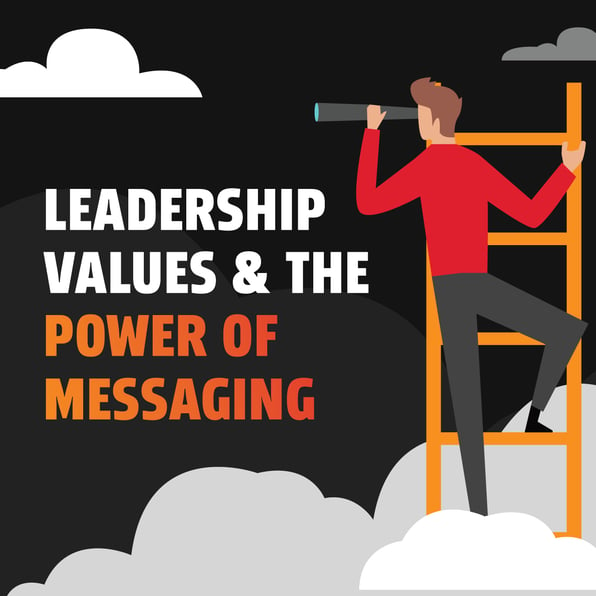It’s hard to generate traffic and leads for your business. Once you do, your next step is to convert those leads into paying customers. What's the solution? Lead nurturing is the marketing strategy that will help you turn leads into customers.
Companies need to nurture leads because of one simple fact:
The majority of people you attract aren’t ready to make an immediate purchase.
HubSpot estimates that number as high as 90%.
For those of us who provide services for other businesses (B2B), that percentage is probably even higher.
Lead nurturing will keep you in front of these potential customers and steadily nudge them towards a purchase decision.
In this post, you’ll learn:
- What lead nurturing is
- Why you need to do it
- 14 tips and strategies for effective lead nurturing
What is Lead Nurturing?
Before going further, let’s define lead nurturing. As a HubSpot Platinum partner, we like their definition:
Lead nurturing is the purposeful process of engaging a defined target group by providing relevant information at each stage of the buyer’s journey. You want to actively move the prospects you’ve created through your marketing and lead generation efforts, to the point where they become paying customers.
HubSpot has identified three broad categories of lead nurture campaigns:
- Engagement programs work to keep your leads engaged with your business by offering credible, straight-forward and uncomplicated content that is relevant to them and keeps their interest.
- Education programs challenge your leads to consider the benefits of your products or services and provide unique insights to how they can do their job better and more effectively.
- Active funnel programs are focused on leads that have actively entered their buyer’s journey. These campaigns are where the rubber meets the road...where marketing and sales must work in complete alignment to bring your work to the final goal - a paying customer.
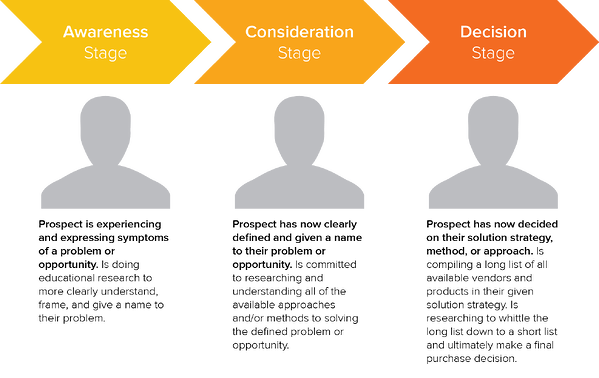
Regardless of the type, implementing a successful lead nurturing strategy will add value to any inbound marketing effort.
Why Lead Nurturing Is Key to Successful B2B Inbound Marketing
There are several differences when you drill down into business to consumer (B2C) and business to business (B2B) marketing, mostly related to final purchase decision-making.
B2C and B2B are self-explanatory. B2C is selling and marketing to an audience of one, the consumer (shoes, baby clothes, toothbrushes, diapers, etc.). B2B companies provide products and services to other businesses (Horseshoe + Co is a B2B company, we provide inbound marketing services to other businesses).
Some marketers argue that consumers are more focused on emotion and businesses are more focused on logic when it’s time to make the purchase. In reality, appeals to emotion can work in both B2C and B2B.
B2C Emotional Selling
“This toothpaste will brighten your smile and make you not want to remain hidden in your house with your horrible yellow teeth!”
B2B Emotional Selling
“Buy our services, save money, and look like a hero to your boss!”.
Appeals to reason also work in both situations. You’ll notice most toothpaste ads tout “4 out of 5 dentists recommend Crest” or something similar. You need to prove “your boss will love” your lead by sharing case studies and other types of proof that your B2B service offering delivers on its promise.
B2B or B2C, just remember that it’s really about P2P (people to people) and that regardless of industry, you are marketing to a person.
Need help building your buyer personas? Use this easy template
The biggest differences in B2B and B2C marketing and lead nurturing involve time and scale:
- The sales process is typically longer
- Purchase decisions are often made, or at least signed off on, by multiple people
- Volumes and contract prices are generally higher (a consumer will by one tube of toothpaste, a hospital will buy cases)
- Contracts are generally longer and relationships are more important
It’s in these differences where lead nurturing provides tremendous value for B2B companies. B2B companies will shorten sales cycles with lead nurturing. Market2Lead research found that nurtured leads have a:
- 23% shorter sales cycle, allowing sales teams to spend less time closing each customer
- 9% higher average deal size
More recent research from The Annuitas Group found that nurtured leads made 47% larger purchases than non-nurtured leads. Educating leads with high quality resources (blogs, ebooks, webinars, and demos for example) builds trust. The repeated touches via email (and other methods) establishes a rapport that establishes your business as a trusted advisor in your industry.
Start optimizing your email lead generation strategy and you’re on your way to larger contracts with a shorter sales cycle.
The following 14 tips and suggestions will help get your lead nurturing strategy off to a great start, or give a struggling strategy a shot in the arm.
Create Well-Defined Goals
You need to know what “success” looks like. Your goals could be simple (10% conversion” or “30% click through rate”) or more complicated (“20% higher contract value per customer). Regardless of your goals, establish them upfront. As your lead nurturing strategies mature, adjust your goals accordingly.
Start Small
As your nurture campaigns mature and you follow the advice in this blog, the complexity of your efforts will increase. You’ll be better able to identify your ideal prospect’s buyers journey and match content to each stage of the process.
But before you begin to personalize; create multiple, automated workflows; multi-layered campaigns with touches across email, phone, text, and social media; and additional levels of detail; you have to take your first step.
Much like a baby usually learns to crawl before she walks, begin your lead nurturing efforts with a single nurture campaign. It’s easy to over-complicate and over-think by looking ahead a year to what you could be doing. Start simple so you can get there.
For instance, pick ONE persona to create a nurture campaign for. If you have multiple products or services, pick ONE product/service and create a nurture campaign for a single persona. Trying to do everything at once in the beginning is a recipe for disaster. Focus; learn; THEN add complexity!
Conduct a Content Audit
What kind of content do you have available to share in your lead nurturing efforts? Blogs, eBooks, podcasts, social media posts, case studies, and webinars are all excellent examples of B2B content.
Map Out Your Buyer’s Journey
What are the friction points and challenges they’re experiencing at each stage of the buyer’s journey? Create email nurturing campaigns for each stage with content that addresses their pain points.
Always Be Helpful
Lead nurturing is about making the sale, but attempting to sell too soon will quickly turn a warm lead into a cold one.
As you create the emails and the content you’ll use to nurture a lead from someone mildly interested in your company to a customer, always think about how this helps your lead. Answer their questions, especially the ones they don’t know they have yet. Be honest. Use easy-to-read language (NO JARGON!).
Your goal is to make it as easy as possible for your leads to learn from and interact with you.
Don’t Abandon Your Email Newsletters
A newsletter may seem outdated, yet remains one of the simplest ways to stay in touch with customers and potential customers. They are also widely used. In the Content Marketing Institute's B2B Content Marketing 2017 Benchmark, email newsletters were the third most-used tactic at 77% (only blogs, 80%, and social media content, 83%, were used more). However, they were the second-most effective tactic, with 40% of marketers saying email is critical to success (blogs were the highest ranked at 52%).
Most of us subscribe to newsletters. They come in all sizes and shapes, from simple text to all images to a mix of the two. Some are long. Some are short. What they all have in common is they are designed to focus attention on you.
Best advice: regardless of the format and frequency of your newsletter, focus on delivering relevant information your leads are interested in.
A/B Test and Adjust Over Time
Most marketing automation tools give marketers the ability to test nearly everything. If you aren’t testing, you aren’t doing everything you can to improve.
What should you test? Here are a few suggestions:
- Email subject lines: Length, questions or statements, personalization, etc.
- Images versus no images
- Product images versus people-centric images
- Types of content -- ebooks, blogs, infographics
- Video
This list is limited by your imagination and time to implement. Lead nurturing should not be a static, set-it-and-forget-it program. Tweaking your strategy over time will allow you to home in on what works best for your customers.
Find Opportunities to Personalize
While marketing automation can support your lead nurturing efforts, by no means should your touchpoints be completely generic. Ensure that your messages speak to the specific pain point your buyer personas are experiencing in addition to these personalization tips:
- Have emails come from a real person rather than the name of your company
- Use tokens for your lead’s:
- Name
- Company name
- Location (if it’s relevant)
Develop Cross-sell and Upsell Campaigns
Lead nurturing shouldn’t only be targeted to leads. Analyze your customer database to identify opportunities for upselling customers to a higher value product and/or to an adjacent product.

Be Persistent!
Survey results from Demand Gen’s 2015 Lead Nurturing Benchmark Study reveal that most marketers use fewer than five touches in lead nurturing programs. Meanwhile, research from the Marketing Lead Management Report reveals that prospects averaged 10 touches from the moment they entered the marketing funnel to becoming a customer.
Experiment with the length of your nurture campaign(s) and the number of customer touches in each, but don’t limit yourself to two or three emails because you don’t want to bother your leads. If you do, there’s a decent chance they’ll never become a customer.
Look for Trigger Opportunities
Your lead nurturing efforts should be dynamic and recognize when prospects take specific action. For example, identifying that a lead has downloaded another resource from your website or viewed your pricing page should trigger different nurturing messages.
Automate Your Lead Nurturing Efforts
Marketing automation tools like HubSpot, Constant Contact, or Marketo allow you to automate your nurture campaigns. For instance, in HubSpot you can set up an onboarding workflow for new customers that welcome the user and provide tips for how to get the most out of the product/service. That nurture campaign can be a single email in length or 30 emails. Further, you can drill down and create campaigns unique to each product you offer.
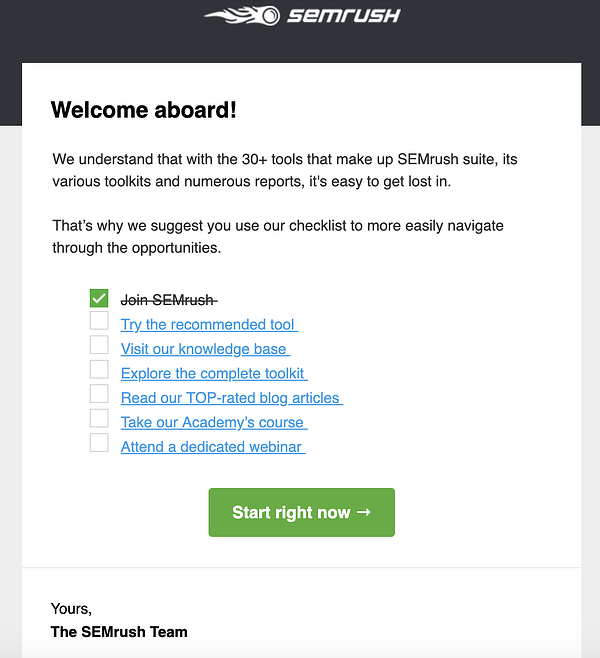 Automation ensures that no one slips through the cracks and you will delight your leads and customers.
Automation ensures that no one slips through the cracks and you will delight your leads and customers.
Specify What’s Next
While your lead nurturing campaigns should focus on delivering useful information to your leads, don’t forget to include a call to action. Anything from a simple “We’re Here to Help, Contact Us for More Information” to a focused “Buy Here” button tells your leads exactly what to do next.
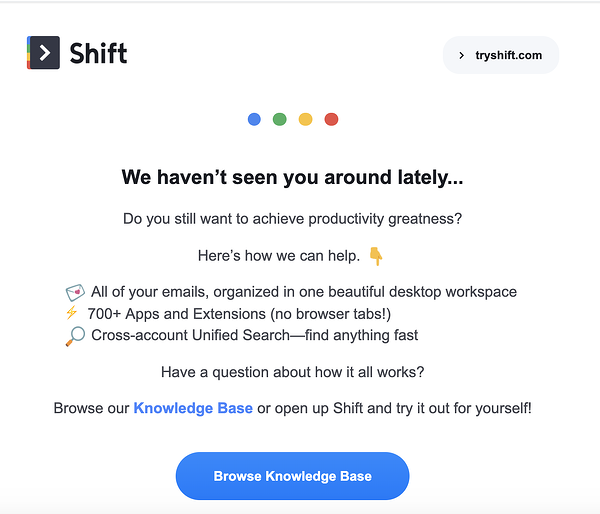
Think Beyond the Inbox
While I’ve focused on email in this blog post, lead nurturing can extend beyond email. Once you have at least one robust email lead nurturing campaign working, start thinking about how you can use additional touch points to supplement your email lead nurturing strategy.
A few suggestions are:
- Retargeting / remarketing ads
- Social media outreach
- Direct mail
- Personalized web content
- Phone calls and messages
- Messaging apps and phone texts
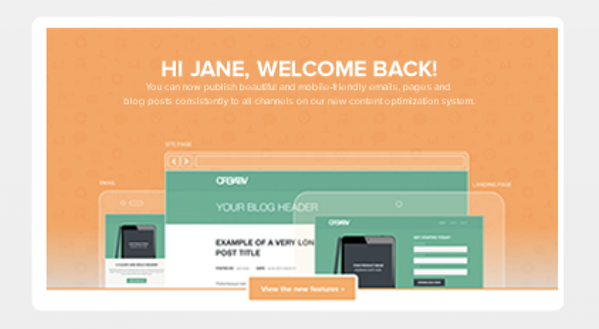
Smartly including these elements in an overall nurture strategy will move your prospects down the funnel and say “yes” to you.
What Are You Waiting For?
Creating lead nurturing campaigns does take time and effort, but the results will be worth it. You’ll create a feeling of trust with your leads and customers, decrease sales cycles, and increase average sales size, especially for B2B companies.
Best of all, with automation you can set up email nurture campaigns and let them run (periodically testing and improving them of course) for years.
Not sure how to begin? We can help you create and execute on your B2B lead nurturing strategy. Give us a shout!




